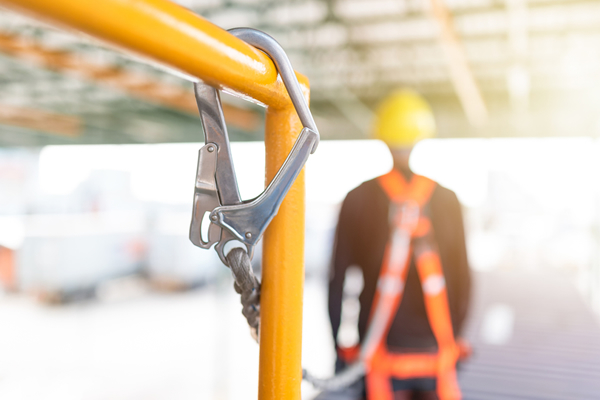Roofing Safety Starts With a Safe Jobsite
For contractors, the hazards are always out there: falls, wires, sharp nails, electrocution and even the weather. Roofing safety starts with the proper equipment and awareness of the risks. Read on for a few key ways to keep your jobsite and your workers safe.

Focus on Fall Prevention
Many incidents on construction sites are caused by what OSHA refers to as the "Fatal Four": falls, being struck by objects, electrocution and being caught in or between equipment. Falls are a leading cause of fatalities and serious injuries; in residential construction, over one-third of fall deaths result from falls off roofs. You can keep your crews safe by setting a good example and teaching them about fall prevention.
Some of the primary causes of on-the-job falls are unprotected edges and openings. Assess your worksite for these hazards, and install guardrails around unguarded openings such as elevator shafts or skylights. Provide covers for all floor and roof holes (and label or mark them accordingly) and install toe-boards and guardrails on elevated runways or other open-sided areas.
OSHA's Fall Prevention Campaign recommends training your roofers to use travel restraints and personal fall arrest systems (PFAS) as well. You can even encourage everyone to participate in a National Safety Stand-Down to raise awareness.
Emphasize Ladder Safety
What should you look for to make sure workers choose the right size or type of ladders, mount them correctly and properly secure them? As always, make sure every ladder is in good working condition, with no cracks or broken parts. OSHA advises always checking that a ladder is long enough to be placed at a four-to-one angle and can extend three feet above the work surface.
The good working practice is to face the rungs whenever going up or down a ladder. Keep one hand on the ladder at all times when climbing. Finally, make sure the ladder is secure at the top and bottom and won't slide or fall.
Know What PPE You Need
Some jobsite hazards require the use of personal protective equipment (PPE):
-
Eye and face protection: safety glasses, goggles and face shields.
-
Hand protection: gloves that fit snugly and protect against jobsite hazards.
-
Head protection: hard hats.
-
Hearing protection: earplugs or earmuffs in noisy work areas.
- Foot protection: work boots with slip-resistant and puncture-resistant soles.
Footwear that provides a good grip and overall protection from punctures is an especially critical part of roofing safety. A surprise nail or shingle-removal foot injury can cause a worker to fall.
Train your roofing crews on the proper wear of PPE. Make sure each employee has equipment that fits properly and is right for the job, and that they wear it every time.
Keep Your Jobsite Clean
A little routine housekeeping can improve roofing safety. For instance, keep the work areas free of clutter and debris. Don't leave air hoses and power cords for nail guns or other electrical equipment lying around as makeshift tripwires. Identify all electrical hazards on the site and clearly label them with warning signs. Routinely inspect PPE and other equipment for cracks or broken parts.
Train and Communicate
General roofing safety, and the safety measures at each new jobsite, should include training and education. This is an opportunity to reinforce the importance of safe work practices, policies and safety procedures. Everyone — laborers and supervisors alike — need to make sure they are following national, local and company safety rules.
Besides PPE and PFAS, you should be familiar with the machinery you are using and its safety protocols. It can be easy to get caught in a pinch, sheer, wrap or crush point. Never position yourself between moving and stationary objects.
Develop a culture of safety within your company. Implementing and enforcing practices that foster roofing and jobsite safety can reduce serious incidents, and help prevent serious injuries from occurring while keeping your team alert.